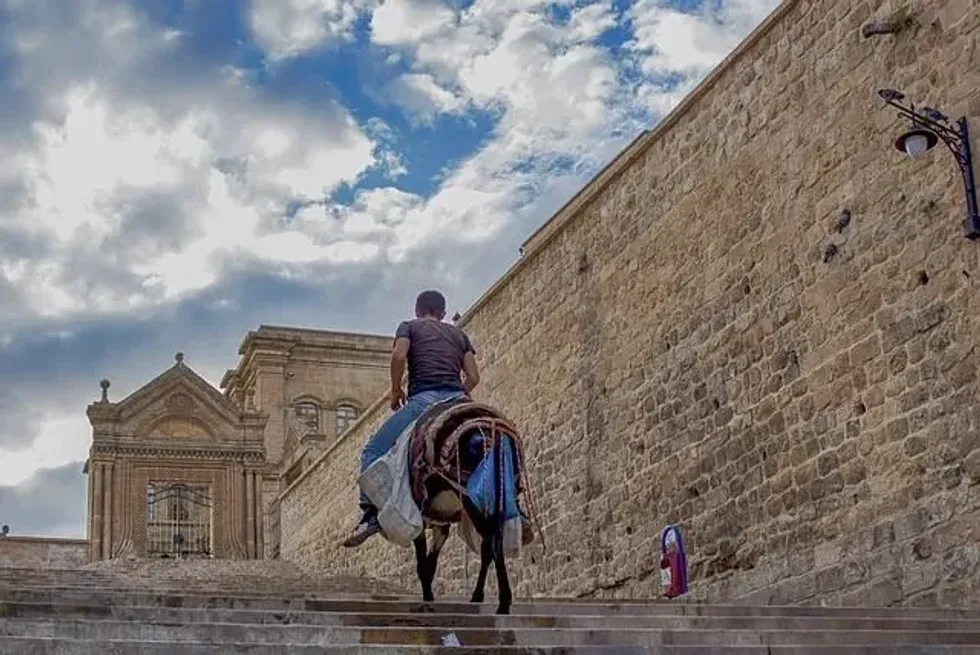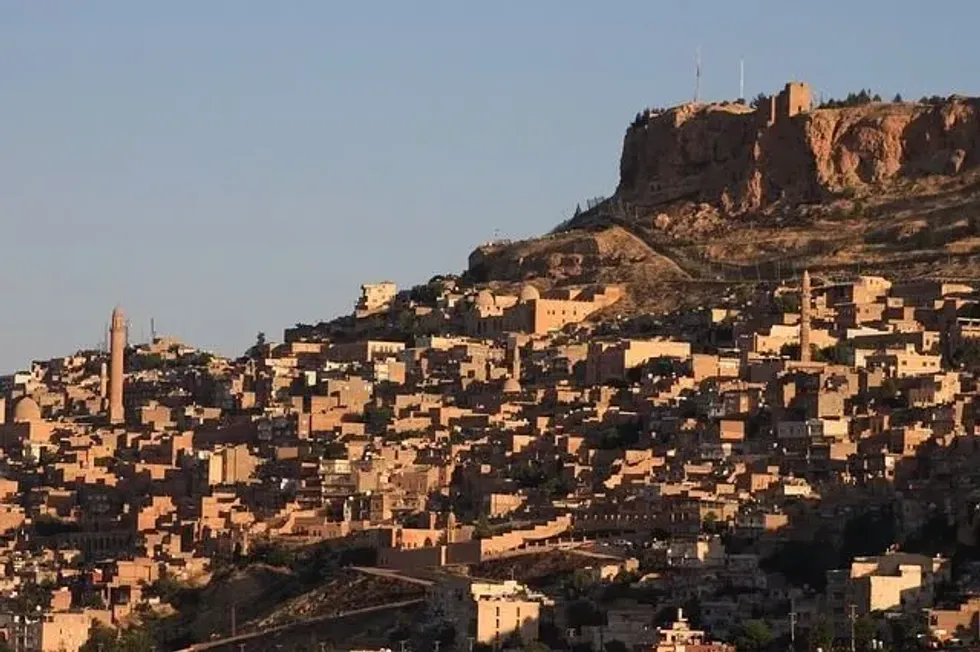13 Ancient Mesopotamia Facts That Will Absolutely Astonish You!
Mesopotamia is a common term referring to western Asia's historical region with the Tigris-Euphrates river system.
Mesopotamia is the place where human societies first commenced and is also termed the cradle of civilization. It is also the place with many historically significant cities such as Nineveh, Babylon, and Uruk.
Mesopotamia is one of the most popular modern civilizations and other civilizations like the Indus valley civilization. The people and their lifestyles were always ahead of their time.
For instance, merchants in Mesopotamia back in the day, unlike modern-day Iraq and other parts, had various ways to trade and thrive. Merchants usually traded clothing, jewelry, food, and other goods intercity, but they used the barter system to buy goods.
Whenever a caravan carrying shipments or goods would arrive, ancient Mesopotamians would celebrate. People had many ways to make a living and thrive.
Mesopotamia's rich soil that had become fertile due to deposits from Tigris and Euphrates rivers for more than 1,000 years had made farming land very productive. This easily helped the population to sustain itself.
Continue reading the article to learn more about the civilization surrounded by Zagros mountains and is now part of modern-day Iraq and other countries.
Do give a read to our articles on ancient Ghana facts and ancient China civilization facts too.
The Origins Of Mesopotamian History
Mesopotamia would have always been on your mind if you are an avid history buff who loves European civilizations. Do you know why it is called Mesopotamia?
It's due to the location between two rivers: the Euphrates river and the Tigris river. The term Mesopotamia is derived from the Greek word meso, meaning middle, and potamus, meaning river, which translates to land in the middle of rivers. Regions between include most modern-day cities like southern Arabia, southwestern Iran, Turkey, and Syria.
Did you know that ancient Mesopotamia was initially home to ancient human civilizations like the Sumerian civilization, the Assyrian empire, the Babylonian empire, and the Akkadian empire? The upper Mesopotamia or northern Mesopotamia is the area from Baghdad, and southern Mesopotamia is the gulf countries in the Persian Gulf, such as Kuwait and western Iran.
The Sumerian civilization was the very first urban civilization of ancient Mesopotamia. It was called urban as the presence of artificial irrigation and canals existed even back then.
Around 9,000 BC, agriculture started developing along with the domestication of animals which enabled civilizations to become urban.
Another one of the great cities in Mesopotamia was Uruk, which was perhaps the largest city of the ancient world back then. Uruk was a part of the Sumerian civilization and was situated in what is today's modern Iraq.
With modern civilizations coming into the picture, farming became an essential part too. According to records from the British museum, early Mesopotamian farmers grew wheat and barley crops.
They also focused on creating gardens that comprised date palms and other vast arrays of crops such as peas, beans, cucumbers, lentils, lettuce, leeks, and garlic. Fruits such as apples, melons, figs, and grapes were also given special emphasis.
To add to the long list of Mesopotamia's facts, it is said that people of Mesopotamia have been inventors of several objects such as the wheel, the chariot, the plow, metallurgy, and maps. The cuneiform script, the world's first written language, was developed by the Mesopotamian people.
Mesopotamian people also created the famous game of checkers along with the concept of seals, mainly cylindrical, to be used as a form of identification.
The origin of early societies in the Mesopotamian civilization was rather dynamic in nature as it approached its hierarchical and rigid organization. Ancient Mesopotamians used a lot of variety and experimentation as they adapted to the presence of other expanding communities and physical environments.
You could say the origin of Mesopotamian history started from the geographical origin of the area bounded by northeast Zagros mountains, the southeast Persian gulf, and spurs of the Anti0Taurus mountain in the northwest and southwest Arabian plateau edge. The Mesopotamian land was also known as the fertile crescent.
Did you know that back then, Mesopotamia covered an area that was 150 miles (241.40 km) wide and 300 miles (482.80 km) long?
The world's first cities appeared around 4000-3500 BC in ancient Mesopotamia, and before this, it was believed that people lived on farms. So you could say that history has recorded cities to have first emerged in Mesopotamia.
The ancient site Eridu was the first city that was ever created that allowed people to work in harmony for the common good.
Astronomy, Science, And Mathematics In Ancient Mesopotamia
The ancient Mesopotamian civilization, situated between the Euphrates rivers and the Tigris river, which is also known by the name fertile crescent, has been famous for many aspects.
Being the pioneer in the emergence of cities such as the Sumerian city, the Akkadian empire, the Babylonian empire, and the Assyrian empire, you would not expect lesser achievements recorded in human history, right?
Let's look at some of ancient Mesopotamia's astronomical, scientific, and mathematical facts to know more!
Ancient Mesopotamians could definitely be accounted to be intelligent and knowledgeable. They had a number system in place even then, with base 60 (unlike the present-day one with base 10).
They would divide time by 60s, including a 60-minute hour and a 60-second minute, which is still relevant even today.
In fact, they even divided the circle into 360 degrees, another thing that's still in practice today. The people from both northern and southern Mesopotamia had a wide array of experience and knowledge about basic mathematical operations such as subtraction, addition, division, and subtraction.
They were well versed even with fractions, quadratic and cubic equations. The reason the people from ancient Mesopotamia learned these skills was to apply them in their day-to-day lives, such as for building large construction projects and keeping track of records.
The people from ancient Mesopotamia had even formulated formulas to solve the area and circumference of various geometric shapes like triangles, rectangles, and circles.
Some historians had found evidence that these people even had the knowledge of Pythagoras' theorem long before Pythagoras even proved it. These people had discovered the value of pi to figure out a circle's circumference.
The mathematical skills of these ancient people were used for more significant and complex applications of astronomy. Mesopotamian astronomers could follow the movements of planets, the Moon, and stars using advanced math.
One of their accomplishments was to predict the movements of several planets using various scientific processes, mathematics, and logic. By studying the phases of the Moon, the people of Mesopotamia even created their first calendar comprising 12 lunar months and this calendar was a predecessor to both Greek and Jewish calendars.
For people with such diverse knowledge of mathematics and astronomy, do you think they would lack in other scientific endeavors? Of course not! Babylonians, for instance, made several advances in the field of medicine. Using previously recorded medical history and logic, they could treat and diagnose several diseases with various pills and creams.
Other technological discoveries of the Mesopotamian people included their use of a potter's wheel to make better objects in pottery; this was the first time a wheel was used in pottery in the world at that time.
In fact, despite not knowing who has invented the wheel, archaeologists have discovered the oldest wheel in Mesopotamia.
So it is highly probable that Sumerian people were the ones who started the use of the wheel in pottery in 3500 BC and then eventually used it for their chariots in 3200 BC too.
Their other technological endeavors included using irrigation to water their crops, looms to weave cloth from wool, and using bronze metal to construct solid weapons and tools.
The Invention Of Copper Fabrication

Can you imagine copper being used 6,000 years ago, when all mankind was still getting accustomed to living life? But Mesopotamian people were well ahead of their time. Let's get to some fascinating facts about how Mesopotamian people came to invent and fabricate copper.
Copper was already put to use in the Sumerian city and by Chaldeans of Mesopotamia after the establishment of other cities like Accad, al'Ubaid, and Ur. The people surprisingly had considerable skills to fabricate copper. Stories of their craftsmanship spread even to Egypt's rich-dwelling people and continued to thrive and flourish for years to come.
Sumerian cities produced extraordinary, almost life-like objects such as various mixing trays and bronze pots. You would find these objects along with saucers, silver-spouted bronze jugs, and other drinking vessels in Al'Ubaid and Ur.
Likewise, some copper razors, chisels, cloak pines, harpoons, and other small articles were also found. But even before these modern-today copper items, copper quivers and arrays along with some prehistoric Sumerian spearheads were found too. So you can say that copper was definitely a fan-favorite in Mesopotamian art and culture.
The practice of burial was also widespread in northern and southern Mesopotamia.
The people adopted burying small copper and bronze figurines under foundations of buildings as a record about the builder. One of the records excavated was a bronze or copper peg 12 in (30.48 cm) length that was related to the Sumerian dynasty king or the king of the first dynasty at Ur.
Another one of such records was that of a god holding a 6 in (15.24 cm) long peh that came from a temple at Ningurusu (circa 2500 BC).
Sumerians were avid users of copper, and another proof of their versatile use of copper is the Sumerian wooden sled that was intended to be used on the sand. It was also known as the queen's sledge.
The sled was constructed by using two oxen who wore large copper collars and had reigns of copper studs.
Along with the sled was a Sumerian soldier who marched with a copper helmet on his head.
While we appreciate the Sumerian people's skills with copper, here's another accomplishment to add, the bust of Ur-Namma, which has a casting on arsenic copper. This was fairly impressive, and a considerable technological feat archived by Sumerians at the time and still has artistic merit to this day.
Mesopotamian Naru Literature
Mesopotamia is a land famous for both science and literature equally. The Mesopotamian Nary literature initially appeared around the 2nd millennium BCE that first featured a famous king from history whose character in the story was most often seen having relation with major gods.
Sumerian writing was also equally compelling. Over time these stories became famous and made a lasting impression in people's minds. Let's visit some famous Naru literature examples.
The legend of Sargon was widely accepted as the king's authentic autobiography. Another literature work, the curse of Agade, dealt with Sargon's grandson Naram-Sin and also became popular as important historical documents.
In fact, these works were so popular that the great scholar L.W. King even incorporated them in his 1910 CE work, 'A History of Sumer and Akkad'.
What made these stories so famous was their highly engaging and entertaining style of writing. These Mesopotamian Naru literature works also centered their content around well-known figures from the past that encouraged the society to relate and put their beliefs in their works.
Another very famous Naru literature work was 'The Epic of Gilgamesh', a story written in 2150-1400 BCE. This work was significantly different from other Naru literature works. This literature mentions the king of Uruk, Gilgamesh, where he is given the central character's role, who is mythical and transcendent and is in search of the true meaning of life.
Several names of Akkadian kings and Assyrian kings were well known in Mesopotamia, from the time the Sargon's reign existed (2334-2279 BCE) to the fall of the Assyrian Empire (612 BCE).
The immense popularity of these stories made them a fan favorite. Their stories were again popular in sites such as Mari and Nineveh.
The ancient people of Mesopotamia back then never really gave a second thought to the validity of such historical accounts as they believed them to be good all around, along with being carriers of important messages.
Religion And Philosophy
The divine or God has always been an integral part of many cultures, and we are sure you'd agree with us on this. Similarly, Mesopotamian religion was also a significant aspect of the people's lives, and they believed in the existence of the divine. Let's unveil some religious facts about Mesopotamia.
Mesopotamians were polytheistic, meaning they held faith in several major and minor gods; one such god was the goddess Inanna. Every important Mesopotamian civilization like the Sumerian, the Assyrian, the Akkadian, or the Babylonian had its own gods and goddesses.
In several archaeological excavations, clay tablets were excavated. These clay tablets described mythology, cosmology, and other religious practices. Were you aware that even some of the biblical stories like the garden of Eden, the tower of Babel, and the flood echo some Mesopotamian myths?
Mesopotamian philosophy was quite simple, for that matter. They believed the world to be a flat disc surrounded by holed and huge space above which existed the heaven. They thought water was everywhere in the universe, and water was responsible for its creation.
Here at Kidadl, we have carefully created lots of interesting family-friendly facts for everyone to enjoy! If you liked our suggestions for ancient Mesopotamia facts, then why not take a look at ancient civilizations facts or ancient Corinth facts?
We Want Your Photos!
More for You
Bachelor of Science specializing in Botany, Master of Science specializing in Clinical Research and Regulatory Affairs

Sridevi ToletyBachelor of Science specializing in Botany, Master of Science specializing in Clinical Research and Regulatory Affairs
With a Master's degree in clinical research from Manipal University and a PG Diploma in journalism from Bharatiya Vidya Bhavan, Sridevi has cultivated her passion for writing across various domains. She has authored a wide range of articles, blogs, travelogues, creative content, and short stories that have been published in leading magazines, newspapers, and websites. Sridevi is fluent in four languages and enjoys spending her spare time with loved ones. Her hobbies include reading, traveling, cooking, painting, and listening to music.
Bachelor of Arts specializing in English Literature

Nishtha DixitBachelor of Arts specializing in English Literature
Nishtha is an experienced SEO writer and editor, with a passion for writing and self-expression. She is currently pursuing an undergraduate major in Literature and Communication and a minor in Political Science from the University of Delhi. Nishtha has completed a certificate master course in English from the British Council and has been appointed as the editor for the bi-monthly magazine of the University of Delhi.
Disclaimer
1) Kidadl is independent and to make our service free to you the reader we are supported by advertising. We hope you love our recommendations for products and services! What we suggest is selected independently by the Kidadl team. If you purchase using the Buy Now button we may earn a small commission. This does not influence our choices. Prices are correct and items are available at the time the article was published but we cannot guarantee that on the time of reading. Please note that Kidadl is a participant in the Amazon Services LLC Associates Program, an affiliate advertising program designed to provide a means for sites to earn advertising fees by advertising and linking to Amazon. We also link to other websites, but are not responsible for their content.
2) At Kidadl, we strive to recommend the very best activities and events. We will always aim to give you accurate information at the date of publication - however, information does change, so it’s important you do your own research, double-check and make the decision that is right for your family. We recognise that not all activities and ideas are appropriate for all children and families or in all circumstances. Our recommended activities are based on age but these are a guide. We recommend that these ideas are used as inspiration, that ideas are undertaken with appropriate adult supervision, and that each adult uses their own discretion and knowledge of their children to consider the safety and suitability. Kidadl cannot accept liability for the execution of these ideas, and parental supervision is advised at all times, as safety is paramount. Anyone using the information provided by Kidadl does so at their own risk and we can not accept liability if things go wrong.
3) Because we are an educational resource, we have quotes and facts about a range of historical and modern figures. We do not endorse the actions of or rhetoric of all the people included in these collections, but we think they are important for growing minds to learn about under the guidance of parents or guardians.







